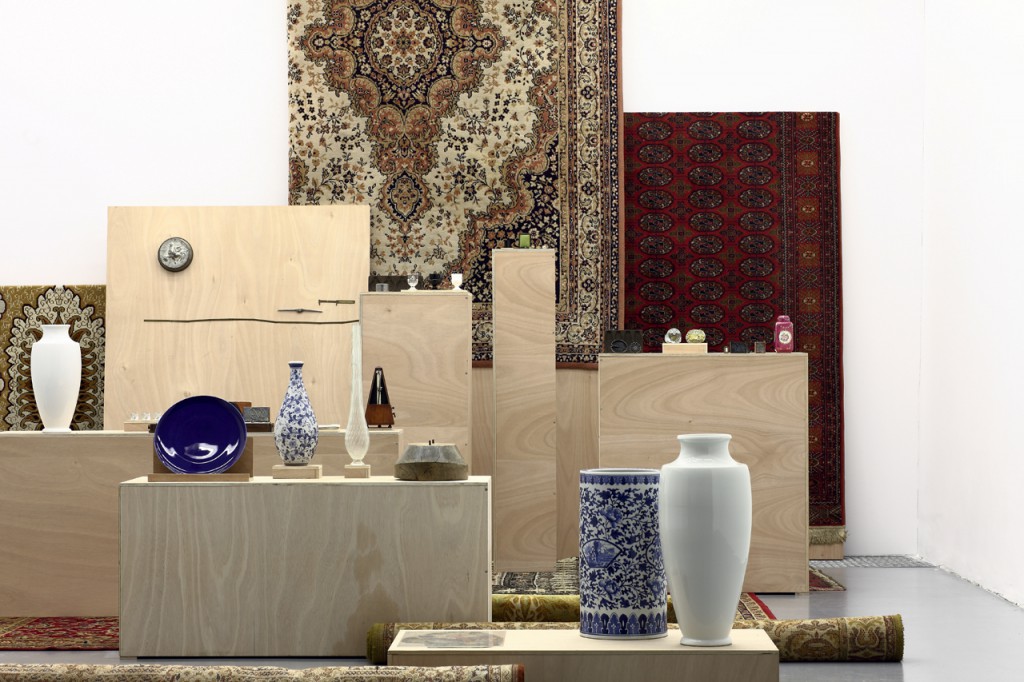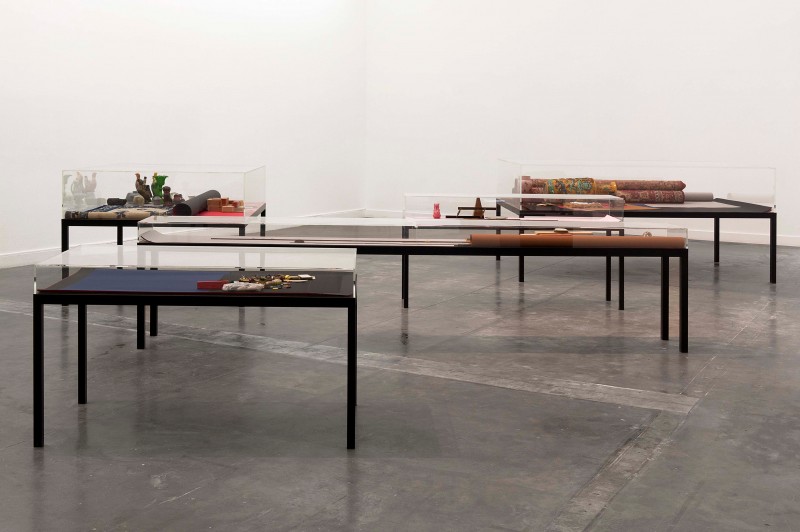Isabelle Cornaro, Paysage avec poussin et témoins oculaires (version II), 2009 and The Whole World is Watching, 2012
The work of Isabelle Cornaro evinces an interest in the way our perspectives are historically and culturally determined. Due to her training as an art historian specialised in 16th- and 17th-century Western art, her visual language is strongly associated with the forms and compositions of the past, ranging from Baroque and Classicism to Modernist abstraction. In her installations, casts and films, Cornaro plays with the possible meanings of everyday implements and artistic objects by placing them in a new context. Oriental rugs, Chinese porcelain, inherited jewellery; miniature landscapes, tautological objects and 16mm film.
Every now and then a single art work becomes associated with an artist in one’s mind and sticks there, obstinately refusing to cede its advantage no matter how sincerely one appreciates that artist’s entire output. Until recently, this has been the case, for me, with Isabelle Cornaro’s installation Paysage avec Poussin et témoins oculaires (version 1) (Landscape with Poussin and Eyewitnesses [version 1], 2008–9), which I first discovered in her 2008 exhibition at La Ferme du Buisson art centre in the Paris suburbs. Loosely based on a painting by Nicolas Poussin, this ‘landscape’ comprises a set of plywood pedestals of varying dimensions and tightly rolled, hung and unfurled oriental carpets, arranged according to rules of perspective and favouring a single point of view. Wandering into the three-dimensional interpretation of its two-dimensional art-historical ancestor, I discovered that the pedestals are topped with large cloisonné-patterned urns, smaller decorative items Cornaro calls ‘tautological objects’ because their forms mimic their functions (such as a duck egg-cup in the shape of a duck), as well as devices for measuring space and for aiding vision. In keeping with the perspectival organization, the size of these objects diminishes depending on their placement in the foreground, middle-distance or background. Cornaro’s accumulation of junk into the language of decoration, in a material that renders it sumptuous, suggests her faith in the innate, extraordinary power of things to endure and withstand the vagaries of how we look and see.
Cornaro uses scanning, photography and plaster casting as her methods of production. Through meticulous arrangements, she investigates the properties of objects and the historicity they can point to or steer away from. Homonyms (II) (2012), for example, are coloured plaster casts taken from soft materials such as laces, quilts and carpets. The misplaced use of colour and materiality of their new form alters their original identity and disrupts how these transformed objects are perceived. In the film, Money filmed from the side and a three-quarter view (2010), Cornraro portrays actual coins and Euro notes being transformed into abstract forms through the cinematic use of light and colour. The preoccupation with spatiality and light in the film brings currency’s aesthetic into the composition, stripping the importance of its monetary value. Cornaro creates differing landscapes in her work, welcoming new reflections on the ideology of object and space.

